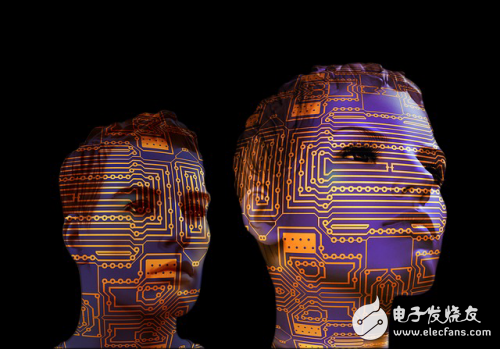MKM Partners believes that by 2025, artificial intelligence (AI) has a potential market of $15 billion, but because of the limitations of resources, AMD is likely to have difficulty capturing opportunities in this area.
AMD announced that it has joined hands with Google Alphabet to enter the AI ​​space. Google Data Center selected AMD's graphics card, Raja Koduri, senior vice president and chief architect of Radeon Technologies Group (RTG), said:
"Google is building a GPU-based infrastructure and wants to use the AMD architecture. Even though AMD doesn't seem to know anything about deep learning, this is our first step."

AMD's resources are limited, how to catch AI this pie?
AMD's FirePro S9300 x2 GPU will speed up the Google Compute Engine and will help Google's machine learning business in the next year.
The FirePro S9300 X2 accelerator card was released in April this year. Based on AMD's dual-core Fiji solution, the Fiji core is still the flagship of AMD until now. From a technical point of view, this GPU is almost identical to the Nvidia Tesla K80 GPU. The biggest question is how AMD can meet upcoming AI opportunities in the absence of resources, as MKM Partners said, because the company's HPC-class GPU resources are not as rich as Nvidia. However, AMD is not stopping, and the introduction of high-end GPUs for data centers is gradually in progress. Recently announced the Polare Pro WX series GPU based on Polaris architecture, focusing on the game field, single-precision floating-point performance of 5.7TFlops, known as the fastest single-slot workstation graphics card. I believe that this kind of GPU is very attractive to AI "players" because of its data processing capabilities. In addition, the Radeon Pro WX series will be widely used in graphics-intensive workloads.
AMD may be limited by its own funds in research and development. However, AMD has solved this problem in a subtle way. In September, AMD announced the public offering of its $600 million common stock and issued a $450 million convertible senior bond in an attempt to repay its nearly $1.3 billion in long-term debt. This will greatly improve the financial situation of AMD.
In addition, AMD plans to make a profit through IP licensing, which will allow more funds to support R&D activities. Established a joint venture with THATIC (Tianjin Haiguang Advanced Technology Investment Co., Ltd.) to obtain royalties through SoC authorization to Chinese companies; earlier this year, it achieved a net cash flow of approximately US$320 million with Nantong Fujitsu Microelectronics. These AMD initiatives have contributed to R&D activities. I firmly believe that AMD will continue to strengthen the construction of such joint ventures in the next few years and contribute to the cash flow.
The biggest problem for AMD in the near future is to kill the dead opponent Nvidia?
I don't think that the limited resources will cause AMD to pay too much attention. Instead, Nvidia maintains its leading position in the HPC market, ensuring that HPC's market share is growing, especially in machine learning and deep learning, which is a real problem for Nvidia's short-term "anxiety".
IaaS market leader Amazon AWS and Microsoft both use Nvidia's GPUs in their data centers. A few weeks ago, AWS announced the launch of the Nvidia K80 GPU-based GPU-accelerated cloud product (AWS EC2 P2). However, I think that Amazon's cooperation with Nvidia will not pose a threat to AMD in the long run.
The Microsoft Azure N series of virtual machines from Microsoft Azure will be officially launched on December 1, 2016. N-series virtual machines can be subdivided into two categories: the NC series and the NV series. Based on the NVIDIA Tesla K80 GPU, the Azure NC virtual machine delivers the computing power to accelerate most high performance requirements and AI workloads. Based on the NVIDIA Tesla M60 GPU, the Azure NV series of virtual machines deliver NVIDIA GRID capabilities on demand, enabling scientists, designers, and engineers to use these new virtual machines to run hardware-accelerated workstation applications, design next-generation cars, or create next-generation stunning movies.
Recently, Google decided to adopt AMD's GPU in its data center, which is the first step for AMD's Nuggets in the AI ​​field. In addition, AMD's Radeon Pro WX series will also be used in graphics-intensive visual workloads, just like the Nvidia Tesla M60.
Unlike Nvidia, AMD has an additional advantage. AMD, like the x86 and ARM architecture processors, is a powerful "player" in the server market.
In GPU-intensive computing, it is used as an accelerator for the CPU due to the huge parallel processing power exhibited by the GPU. So the demand for AMD GPUs in the data center will also generate demand for their CPUs. While the data center is generating demand for AMD GPUs, it will also drive the development of the CPU. I believe AMD will offer attractive pricing for GPU-CPU portfolios to expand its server market share. I believe that due to this news of Google's AI world, the market will push AMD's share price to a higher number. I think the final price will reach about $10.
Contactless Liquid Level Proximity Sensor
China leading manufacturers and suppliers of Contactless Liquid Level Proximity Sensor,Photoelectric Proximity Sensor, and we are specialize in Wireless Proximity Sensor,Long Range Proximity Sensor, etc. SUENW always puts customer needs first and insists on factory self-management. Look forward to your cooperation!
Contactless Liquid Level Proximity Sensor,Photoelectric Proximity Sensor,Wireless Proximity Sensor,Long Range Proximity Sensor
Shenzhen ShenWu Sensor Co.Ltd. , https://www.szsuenw.com
